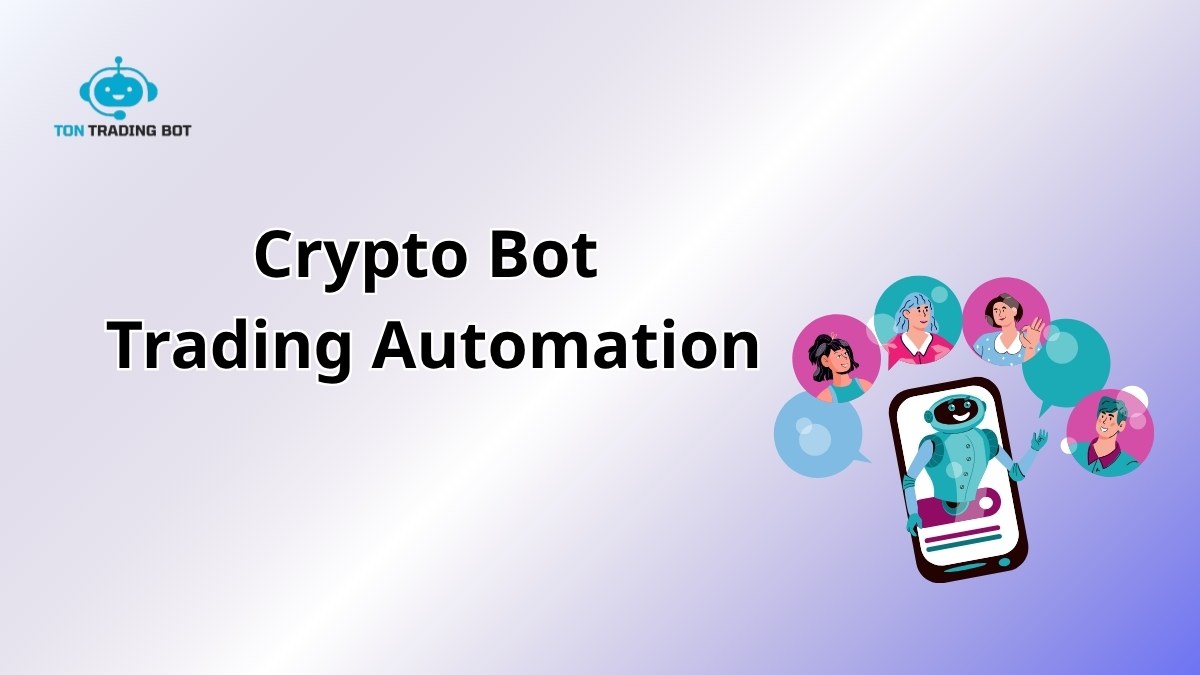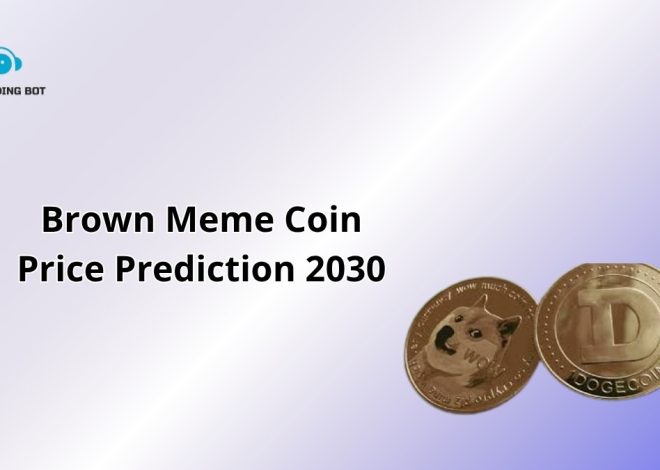
Crypto Bot Trading Automation Explained
Contents
- 1 Why Crypto Bot Trading Automation Matters More Than Ever
- 2 What Is Crypto Bot Trading Automation?
- 3 Core Components of Crypto Bot Trading Automation
- 4 Popular Crypto Bot Strategies Used in Automation
- 5 Advanced Features in Modern Crypto Bot Trading Automation
- 6 Key Benefits of Crypto Bot Trading Automation
- 7 Challenges and Limitations of Crypto Bot Trading Automation
- 8 Best Crypto Bot Platforms for Automation in 2025
- 9 How to Get Started With Crypto Bot Trading Automation
- 10 Future of Crypto Bot Trading Automation
- 11 Can You Afford to Ignore Automation in Crypto Trading?
Why Crypto Bot Trading Automation Matters More Than Ever
In today’s high-volatility crypto markets, successful trading is no longer just about instinct or timing—it’s about automation. Manual trading struggles to compete with the speed, precision, and scalability offered by automated systems. That’s why crypto bot trading automation is becoming a core tool in the arsenal of professional and retail traders alike. Whether you’re day trading, scalping, or building a passive income stream, automated bots can help execute faster, emotion-free trades in real time, around the clock.
What Is Crypto Bot Trading Automation?
Crypto bot trading automation refers to the use of software tools or algorithmic scripts that automate trading decisions and execution. These bots can be programmed to analyze market data, generate trading signals, and carry out buy or sell orders based on predefined criteria or live market indicators.
In simple terms, instead of a trader manually watching charts and clicking buttons, a bot handles the job—using logic, speed, and consistency.
How Is It Different From Manual Trading?
| Aspect | Manual Trading | Crypto Bot Trading Automation |
| Speed | Slower, human-limited | Millisecond execution |
| Emotion | Subject to fear and greed | 100% logic-based |
| Consistency | May vary with mood or stress | Executes rules exactly |
| Scalability | Limited to one account | Can run across dozens of markets 24/7 |
| Efficiency | Requires constant screen time | Fully autonomous once configured |
Core Components of Crypto Bot Trading Automation
Market Signal Generation
Crypto bots rely on technical indicators, mathematical models, or even machine learning to identify trading opportunities. These signals can be generated using:
- Moving Averages (MA, EMA, SMA)
- RSI (Relative Strength Index)
- MACD (Moving Average Convergence Divergence)
- Bollinger Bands
- Volume patterns
- Candlestick analysis
Some advanced bots can also pull on-chain data (such as wallet activity, whale transactions, or gas fees) and news sentiment from Twitter, Reddit, and other social channels to guide decisions.
Trade Execution Engine
Once a condition is met, the bot executes the trade. Trade execution happens via APIs, which connect the bot to centralized (Binance, Coinbase, Bybit) or decentralized exchanges (Uniswap, PancakeSwap).
Execution speed and slippage control are crucial. The best bots monitor order book depth and time their orders to minimize market impact and avoid getting “front-run.”
Portfolio Management System
Bots also manage the broader portfolio by:
- Rebalancing assets automatically (e.g., maintaining a 50/50 BTC/ETH ratio)
- Hedging using futures or options
- Allocating capital across multiple trading strategies
Strategy Logic Layer
This is the brain of the bot. Strategies may include:
- Fixed rule-based logic: IF this condition, THEN do this.
- Statistical models: Mean reversion, volatility breakout, etc.
- Machine learning algorithms: Neural networks or reinforcement learning.
- Genetic algorithms: Evolve trading logic based on historical performance.
Popular Crypto Bot Strategies Used in Automation
Each market condition demands a different approach. The right crypto bot trading automation strategy depends on your goals, time horizon, and risk appetite.
Scalping Bots
These bots aim for small profits from micro-price movements. They may enter and exit trades dozens or even hundreds of times per day.
- Works best on high-volume, low-spread assets (e.g., BTC, ETH)
- Often uses technical indicators like VWAP or order book analysis
- Requires high-frequency data access and low latency
Grid Bots
Perfect for ranging or sideways markets.
- Places buy and sell orders at fixed price intervals
- Profits from market bouncing between support and resistance levels
- Minimizes need for trend prediction
Dollar-Cost Averaging (DCA) Bots
Ideal for long-term investors who want to reduce volatility.
- Automatically buys a fixed amount of crypto at regular intervals
- Reduces impact of short-term market fluctuations
- Passive and requires little oversight
Arbitrage Bots
Profit from price discrepancies across exchanges.
- Spot price gaps between platforms like Binance and Kraken
- Requires fast execution and capital on multiple exchanges
- Often profitable in highly volatile or illiquid markets
Trend-Following Bots
These bots ride momentum in either direction.
- Buys when an uptrend is confirmed, sells when downtrend starts
- Uses indicators like MACD crossovers, ADX, or Parabolic SAR
- Strong in bull or bear markets, less effective in choppy conditions
AI-Enhanced Bots
These bots adapt and evolve based on market conditions.
- Use reinforcement learning, NLP, or predictive modeling
- Can adjust position sizing, stop-loss, and strategy type dynamically
- Still experimental, but showing increasing promise
Advanced Features in Modern Crypto Bot Trading Automation
Today’s bot platforms offer powerful features that give traders unprecedented control:
- Backtesting: Simulate your strategy on historical data to test profitability
- Paper Trading: Try your bot in real-time with no real money involved
- Smart Order Routing: Bots break large orders into smaller chunks to avoid slippage
- Trailing Stop-Loss: Lock in gains as price rises while limiting downside risk
- Multi-bot Deployment: Run different bots across exchanges, pairs, and strategies
Key Benefits of Crypto Bot Trading Automation
- 24/7 Trading Coverage: Bots never sleep. They monitor markets constantly and act instantly.
- Removes Emotional Decision-Making: Avoid the pitfalls of panic selling or chasing green candles. Bots stick to logic.
- Increases Speed and Efficiency: React faster than any human can to price swings or order book changes.
- Enables Strategy Diversification: Run multiple strategies simultaneously across different assets and market conditions.
- Scales with Your Portfolio: As your investment grows, bots allow seamless expansion across markets without extra effort.
Challenges and Limitations of Crypto Bot Trading Automation
Despite its advantages, automation isn’t risk-free.
- Overfitting in Strategy Design: A strategy that worked in 2022–2024 might fail in a new market regime. Backtest wisely.
- Exchange API Downtime: If an API fails or gets throttled, your bot may miss opportunities—or worse, leave you exposed.
- Flash Crashes and Sudden Volatility: In events like the May 2021 crash, bots can rapidly execute many losing trades. Protection logic is crucial.
- Security Risks: Bots rely on API keys. Without strict permissions and 2FA, attackers could compromise your account.
Best Crypto Bot Platforms for Automation in 2025
| Platform | Notable Features | Ideal For |
| 3Commas | Strategy builder, smart trading terminal | Intermediate to advanced |
| Pionex | Free bots with simple | UI Beginners |
| Bitsgap | Arbitrage & grid trading with analytics | Multi-exchange traders |
| Cryptohopper | Cloud-based, marketplace for strategies | Custom strategy builders |
| TradeSanta | Grid and DCA bots, mobile-friendly | Retail investors |
| HaasOnline | Script-based bots, AI integration | Professional quant traders |
How to Get Started With Crypto Bot Trading Automation
- Choose a Platform: Based on ease of use, features, and integrations.
- Connect Your Exchange Account: Use secure API keys with trading-only access.
- Define Strategy Logic: Start simple—DCA or trend-following are good for beginners.
- Backtest Your Strategy: Always test before going live.
- Deploy With Small Capital: Begin with a low amount or paper trading.
- Monitor and Optimize: Set alerts, review logs, and make necessary adjustments.
Future of Crypto Bot Trading Automation
As AI, DeFi, and real-time data streams evolve, bots will become more autonomous, adaptive, and predictive. We’re entering an era where trading bots will:
- Act on real-time sentiment data from social media
- Integrate with on-chain governance or DAOs
- Collaborate in bot networks to manage pooled capital
- Execute cross-chain arbitrage across L2s and DeFi protocols
The boundary between automated trading and intelligent investing is quickly fading.
Can You Afford to Ignore Automation in Crypto Trading?
In a hyper-competitive, 24/7 market like crypto, speed and consistency are everything. Manual trading simply can’t keep up. Whether you’re a casual investor or a serious trader, embracing crypto bot trading automation can dramatically improve your performance, reduce stress, and unlock more opportunities.
So the real question is: Are you ready to trade smarter—not harder—in 2025 and beyond?






